
Conversation

🥳 Feedback Received!
Thanks for taking a moment to share your thoughts — it genuinely helps us make each chapter sharper.
What happens next:
- Your feedback goes straight to our product team.
- We’ll use it to refine lessons, clarify examples, and make the program even more useful.
Appreciate you helping make this program better for everyone.
Ready for your next challenge? 👇
Rapid-fire Copywriting Tips
Here are 10 actionable tips to make your copywriting better.
You can use it as a checklist as you review and edit your copywriting.
#1. Make it about them
Most people focus on what matters to them—their product and its features. Instead, talk about what’s in it for them.
“People aren’t against you, they’re just for themselves.”
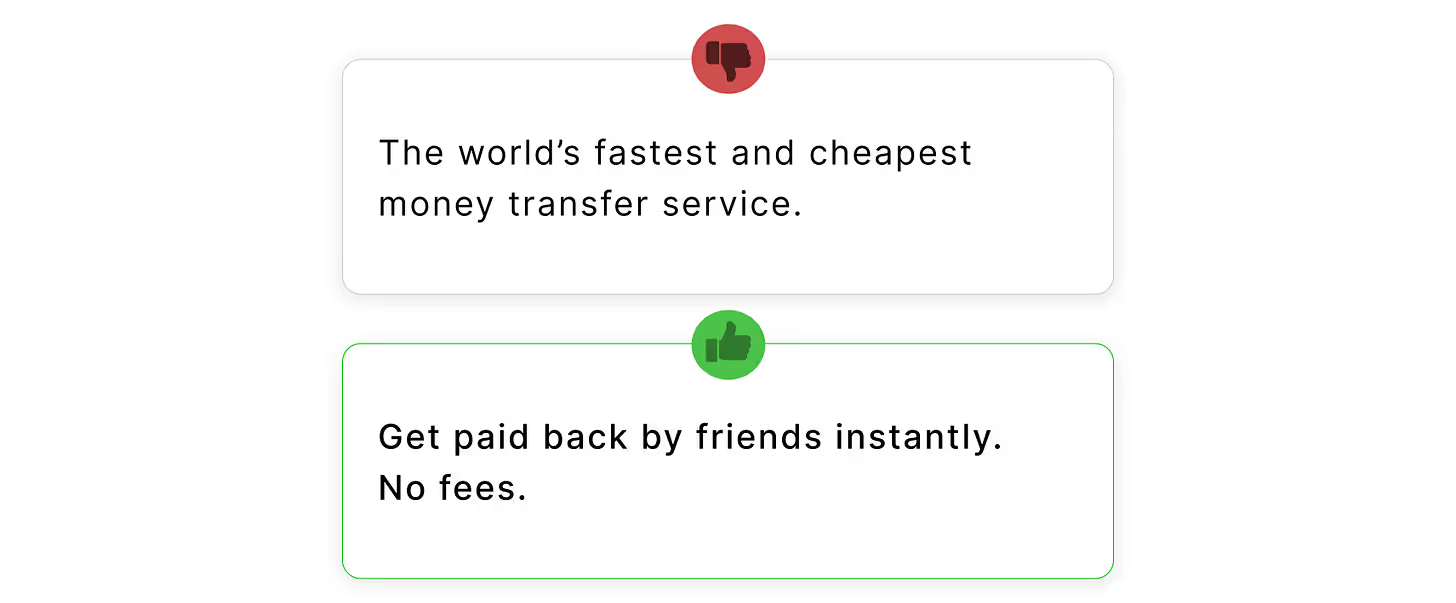
Think: What are the main problems you solve? How does their life change as a result?
#2. Make it relatable
Relate your product to something that they already understand perfectly. It’s a shortcut to comprehension.
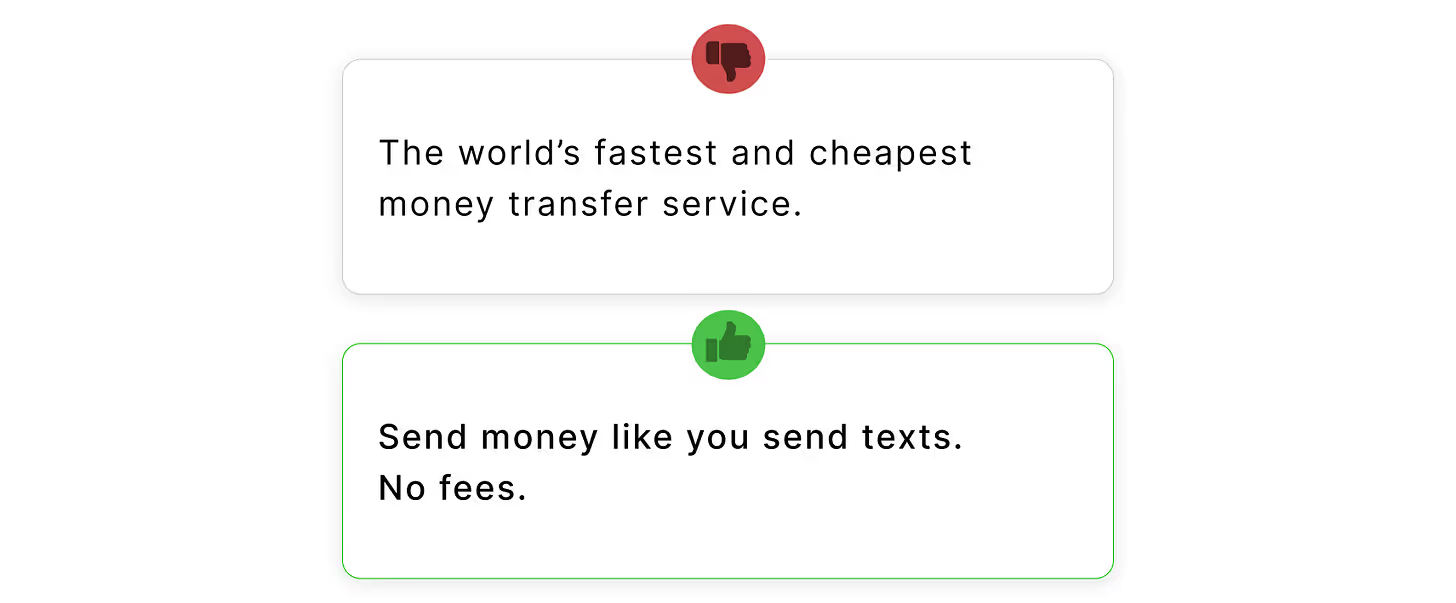
Tip: Ask/watch current customers how they explain your product to a friend. Find the analogies they use.
#3. Cut the fluff
Remove words that don’t add value. Particularly early on. People have infinite things demanding their attention. You need to hook their interest as succinctly as possible.
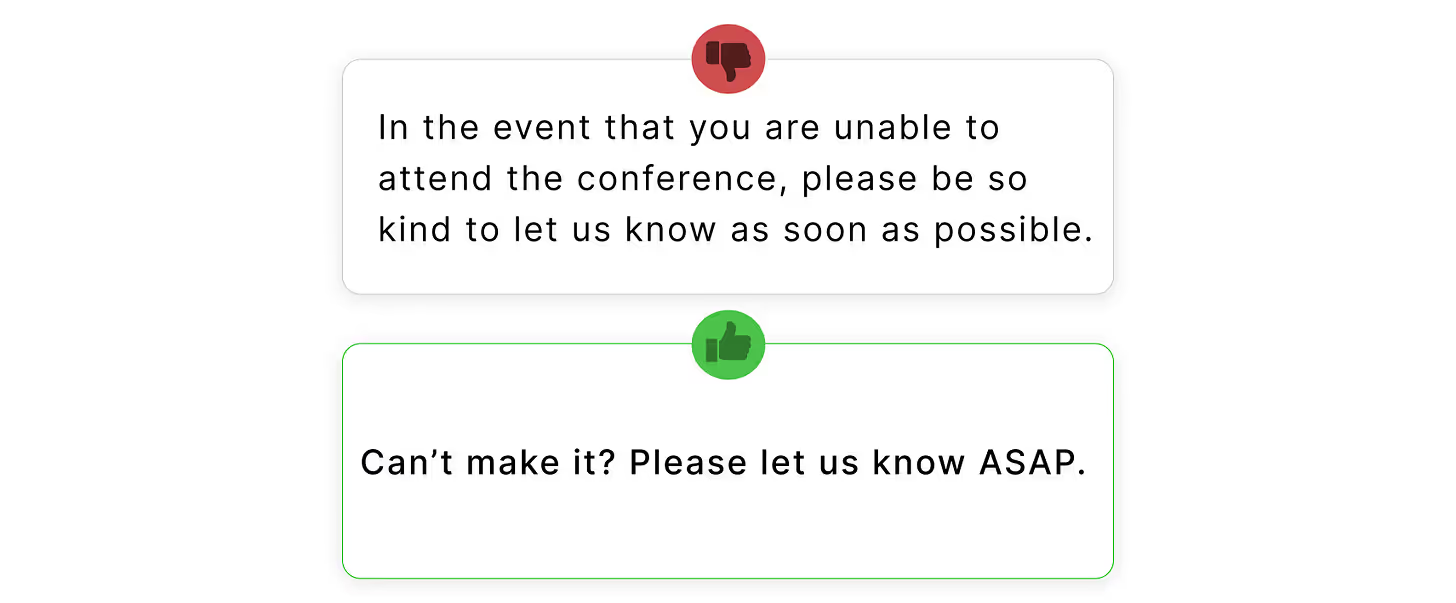
Tip: Remove adverbs, adjectives, and filler words—it makes it punchier. Also try restructuring the sentence entirely.
#4. Use simple words
Don’t use a $10 word when a $0.05 word will do. Don’t use industry jargon either. Pretend you’re explaining it to a 10-year old or a grandparent.
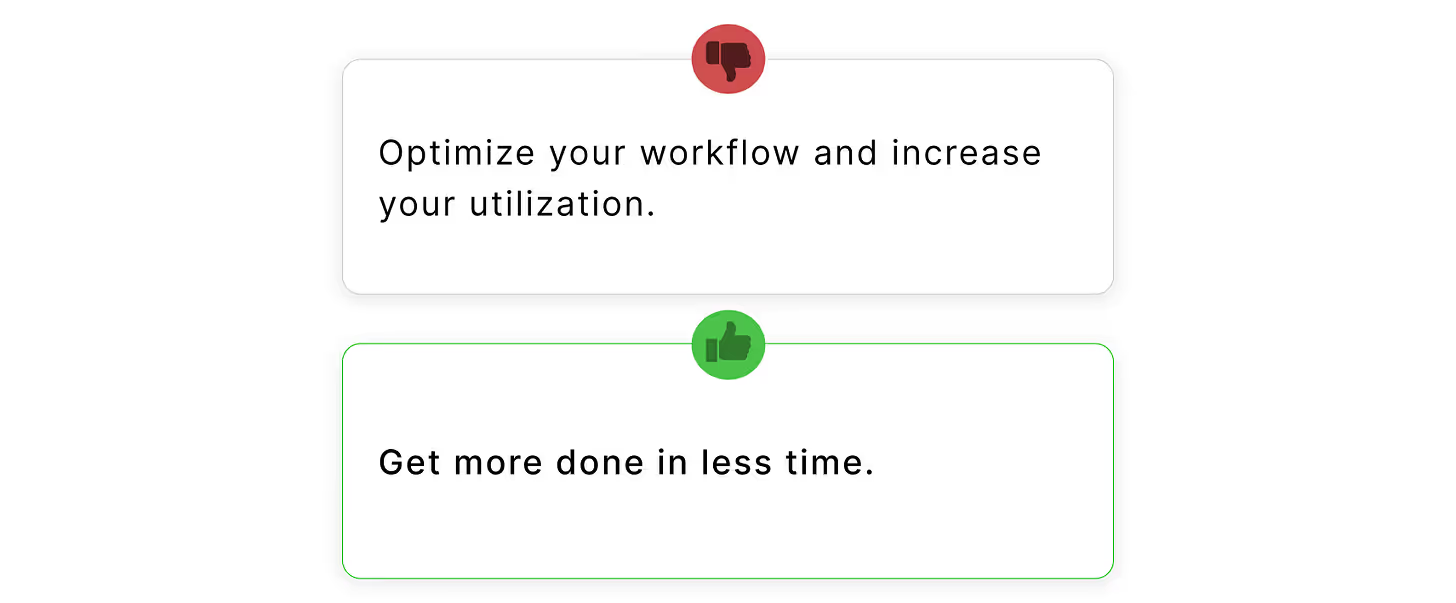
Tip: This applies even if your audience is highly intelligent. Everyone appreciates it.
#5. Be specific & visual
Don't make them do the work. Spell it out for them and make it easy to picture what they're getting.
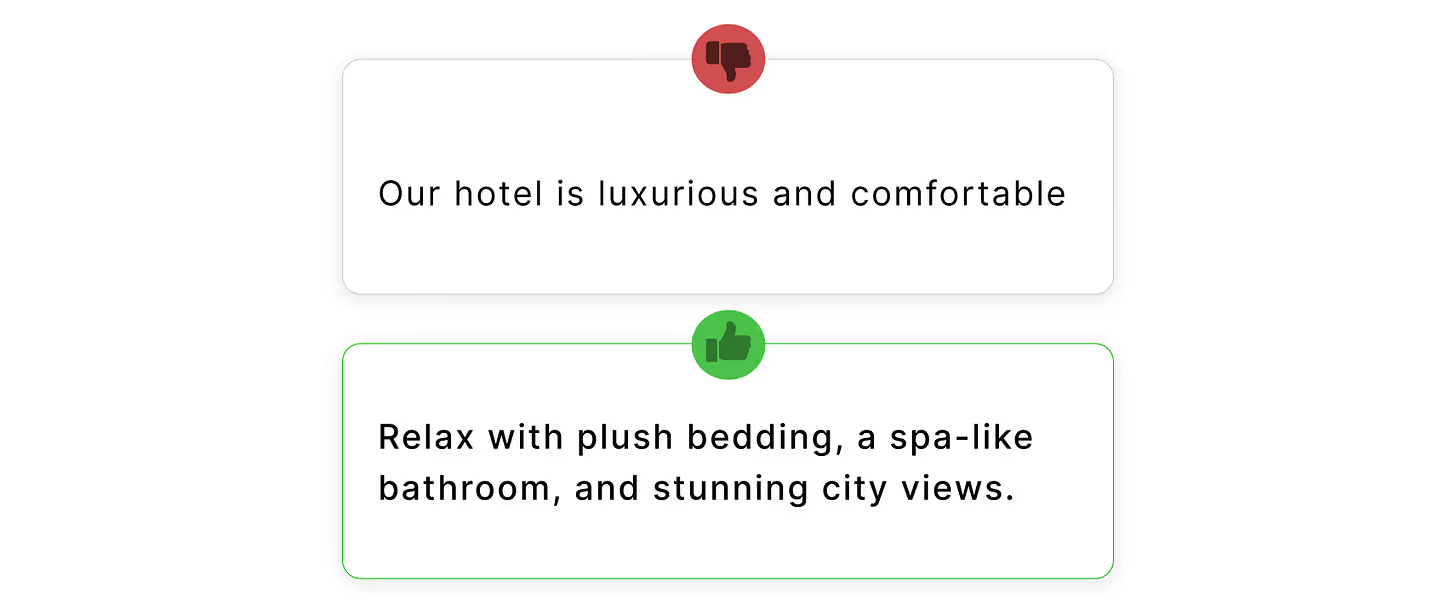
Tip: Do audience research to identify the specific things they care about most and highlight them.
#6. Use active voice
Active voice results in shorter, sharper sentences. Making your copy easier to follow and finish.
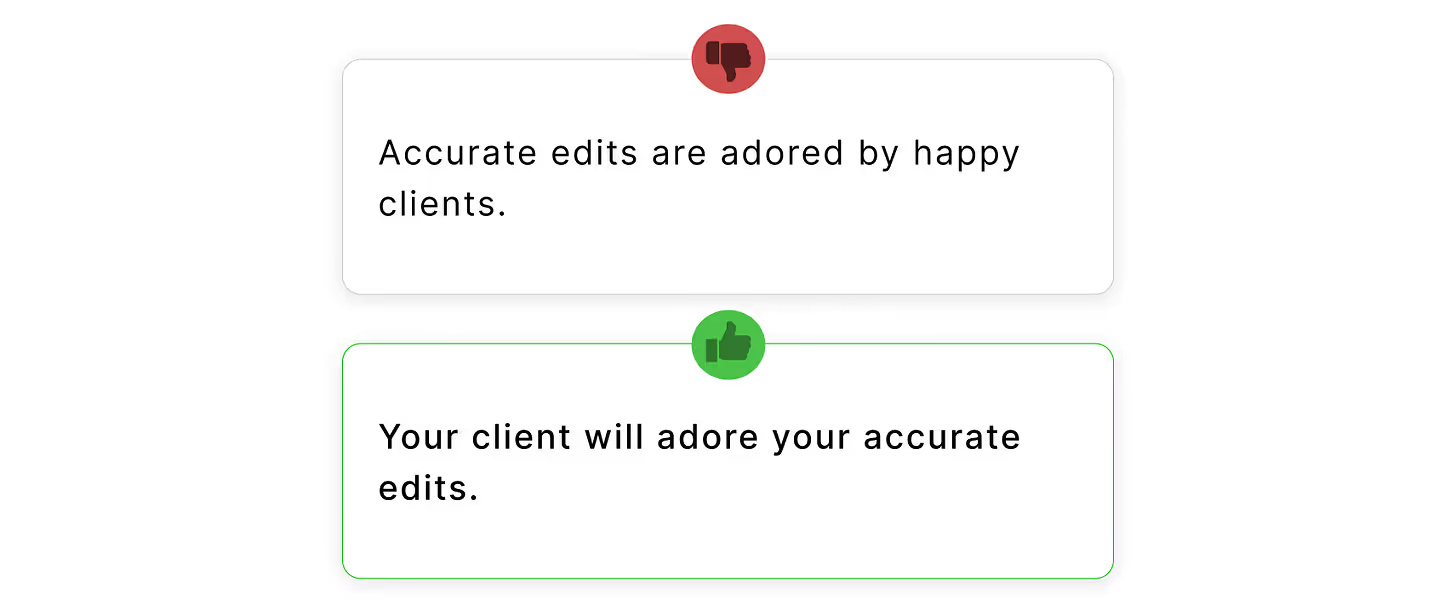
Notice that this one also makes YOUR client the star of the show, not the edits.
Tip: Place emphasis on the subject. Use specific verbs to describe the primary action.
#7. Tell a story
Stories make it relatable, interesting, and real. Don't make them do the work. Illustrate.

Tip: Provide just enough details for readers to feel emotionally invested.
The first focuses on the what.
The second is a simple story that illustrates why someone should use the tutoring service.
But imagine instead the story was:
"Little Johnny, a 10-year-old boy in New Hampshire, liked to ride bikes, collect pennies in his stomach, and crush cans of Liquid Death.
Oh which reminds me, I don't really like the UX of Liquid Death. I can't close the can and throw it into my bag after opening it!
Anyway, did I mention Little Johnny was not doing so well in Math class? Well, his parents Suzy and Bob, an engineer... I think she's an electric engineer, and a doctor (dermatologist maybe? whichever ones work with skin!), are deeply ashamed...blah blah tutoring blah blah he's doing well now!"
Snore, right? The whole time you're telling the story, the other person is desperately waiting for you to get to the point. And is confused about all these random details.
Wes Kao (founder of Maven and altMBA) says you need to find your story's MVB (Minimum Viable Backstory). Find the perfect amount of context to set the stage—and cut the rest.
For example, that camping trip where you almost got eaten by a bear:
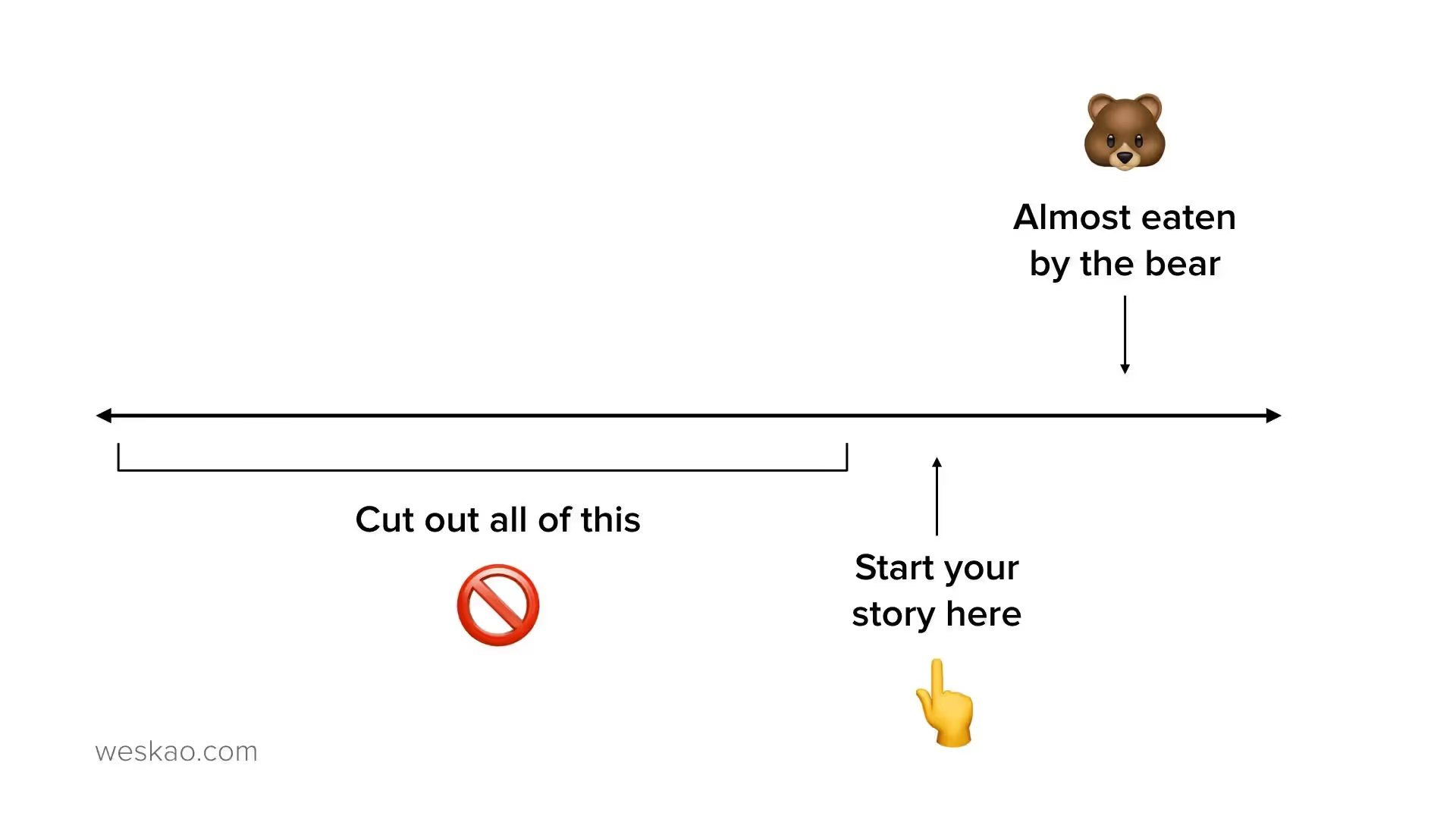
So tell stories in your copywriting, but cut out excess context. Your audience will be more captivated. And your message won't get lost in a sea of irrelevant details.
#8. Make it punchy
Steal concepts from poetry. Use literary devices (here's a post summarizing some of the best ones). Chop up sentences. Add rhyme and rhythm.
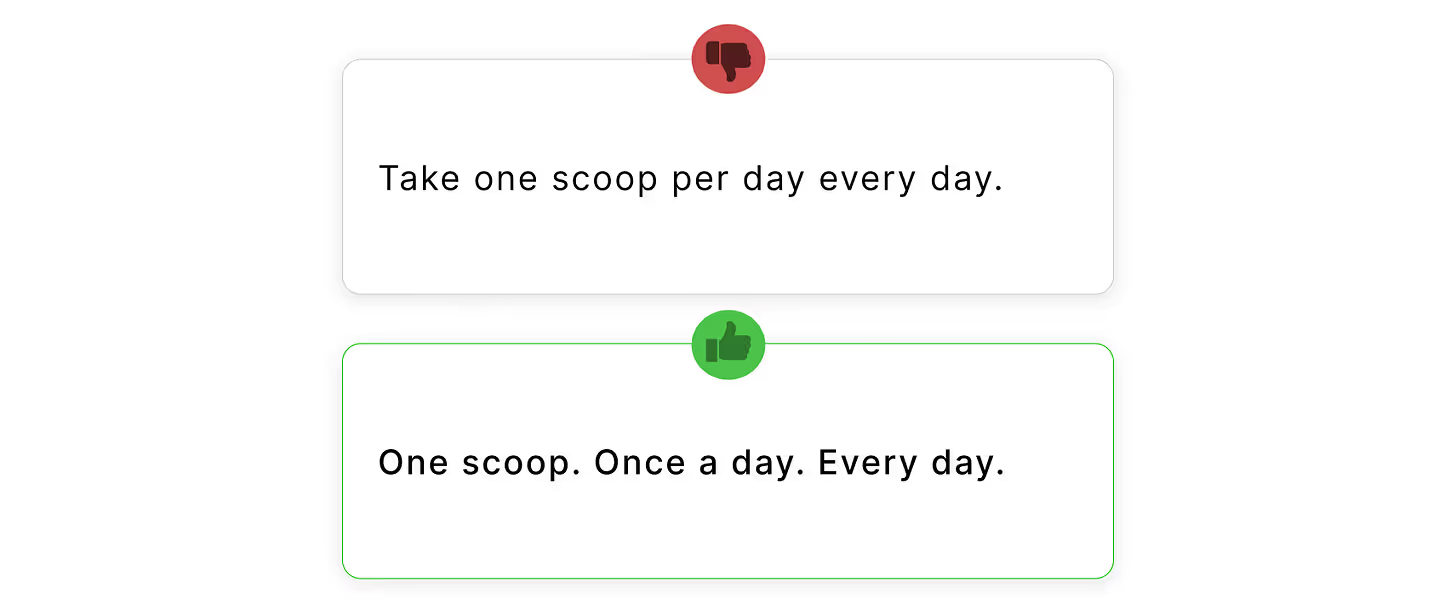
Tip: Don't focus on having impeccable grammar. Focus on making it fun and easy to understand.
#9. Handle objections
Trying to sell something to someone without stopping to think through their most likely objections is like this guy:

Identify the most common objections that come to people's mind. And proactively handle them.
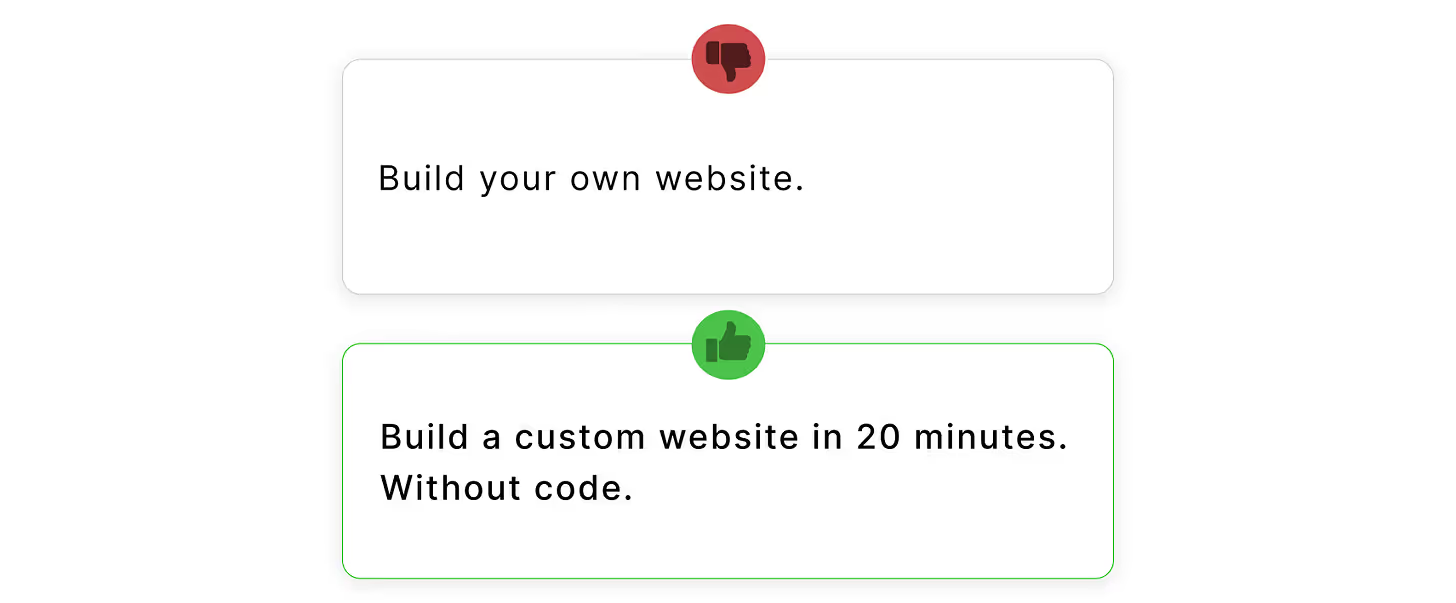
Tip: Ask customers: "What almost stopped you from buying?"
Here are examples using some well-known companies:
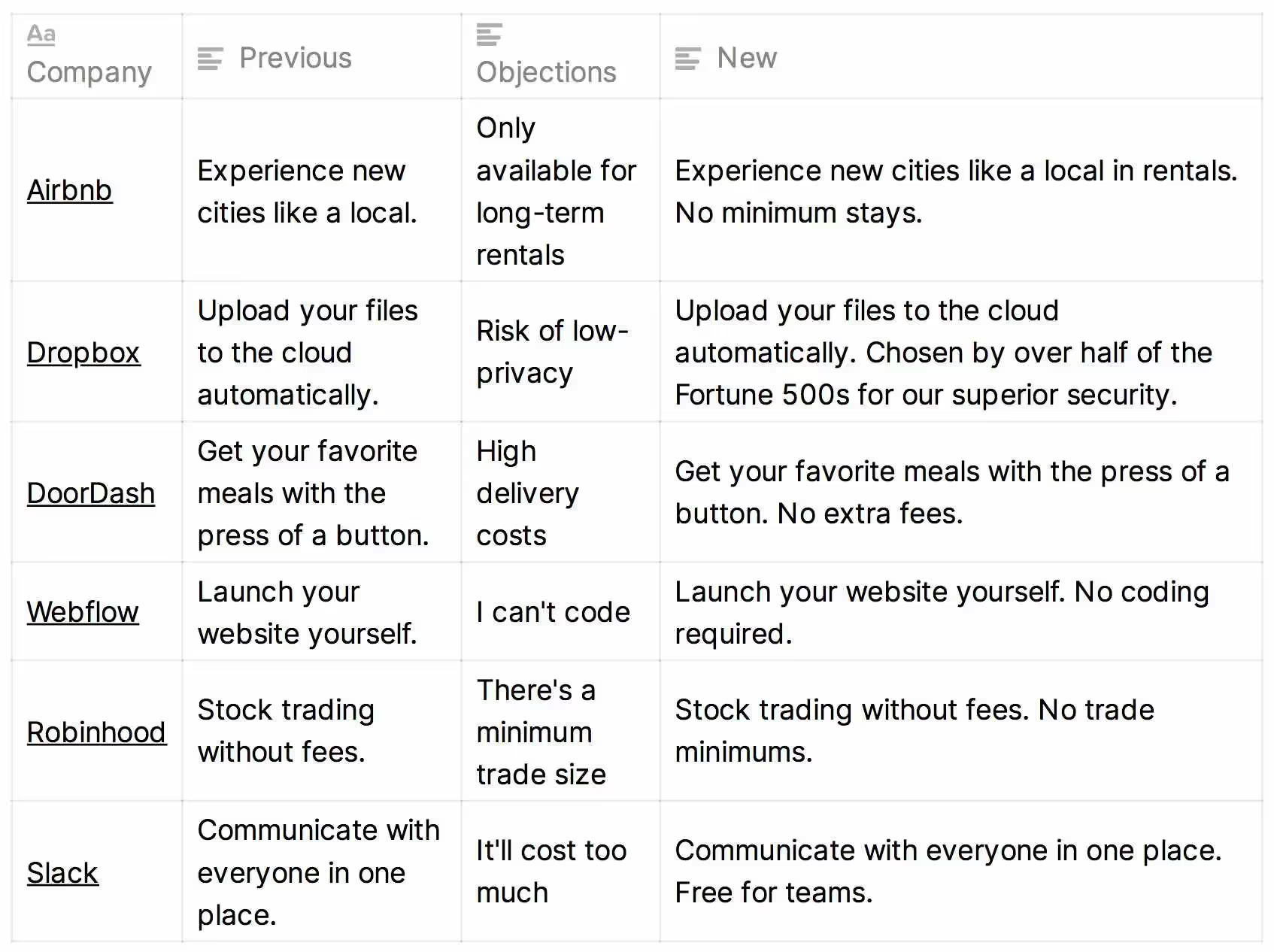
#10. Be bold
No one identifies with wishy-washy statements. Take strong stances to find your tribe.

Tip: You'll annoy some people, but they aren't your target audience. Say the things your audience wishes they had the courage to say.
#11. Appeal to interest, not reason
People are profoundly illogical.
Our actions are predominately driven by emotion.
Then, we tell ourselves logical stories to rationalize our irrational behavior.
Savvy marketers and founders recognize this and leverage it.
Here’s an example from Poor Charlie’s Almanack:
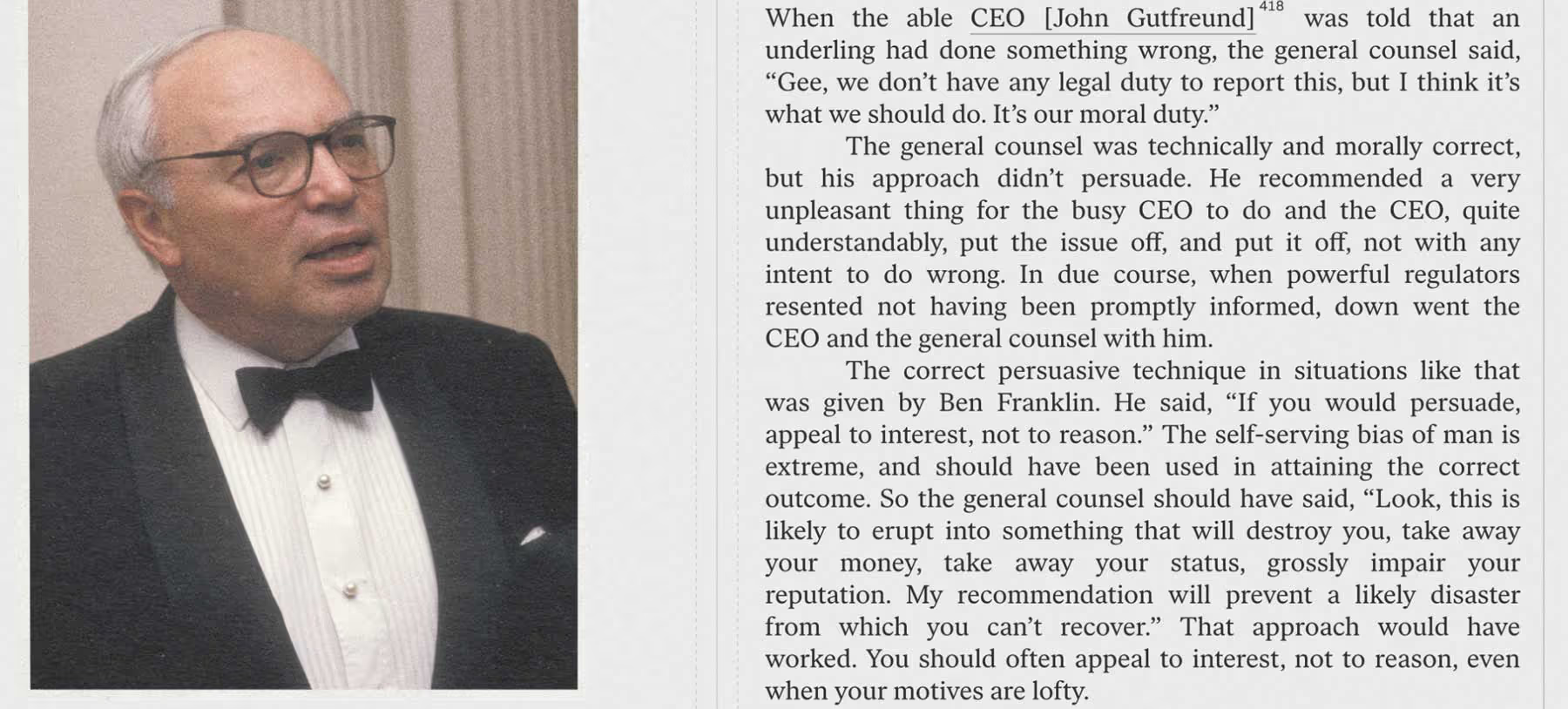
In short, to convince, don’t appeal to reason.
Instead, appeal to their selfish interests.
Let’s dive into two tangible examples:
1. High-end electric car (ex: Tesla)
- Reason:
- Environmental benefits.
- Savings on gasoline.
- Low maintenance costs compared to traditional gasoline vehicles.
- Interest:
- Prestige from owning the newest Tesla.
- Break-neck acceleration.
- Quirky and novel features (whoopie cusions).
- Futuristic Full-Self Driving that your friends will be wowed by.
2. Educational children’s toys
- Reason:
- Explain how the toys enhance learning and development.
- Discuss the safety of materials used.
- Made from durable, high-quality materials.
- Interest:
- Promote how these toys can make their child smarter.
- The free time parents will have because the child will be distracted.
- How the toys will help their children succeed in the future.
We all know that we shouldn’t eat sweets and fried foods.
They’re bad for our health after all.
Yet almost every single one of us does.
So clearly the logical argument is not compelling. So instead, find the self-interested argument.
Apply these to your writing
Obviously not every sentence or piece can or will use all of the above, but let them be your guiding light.


